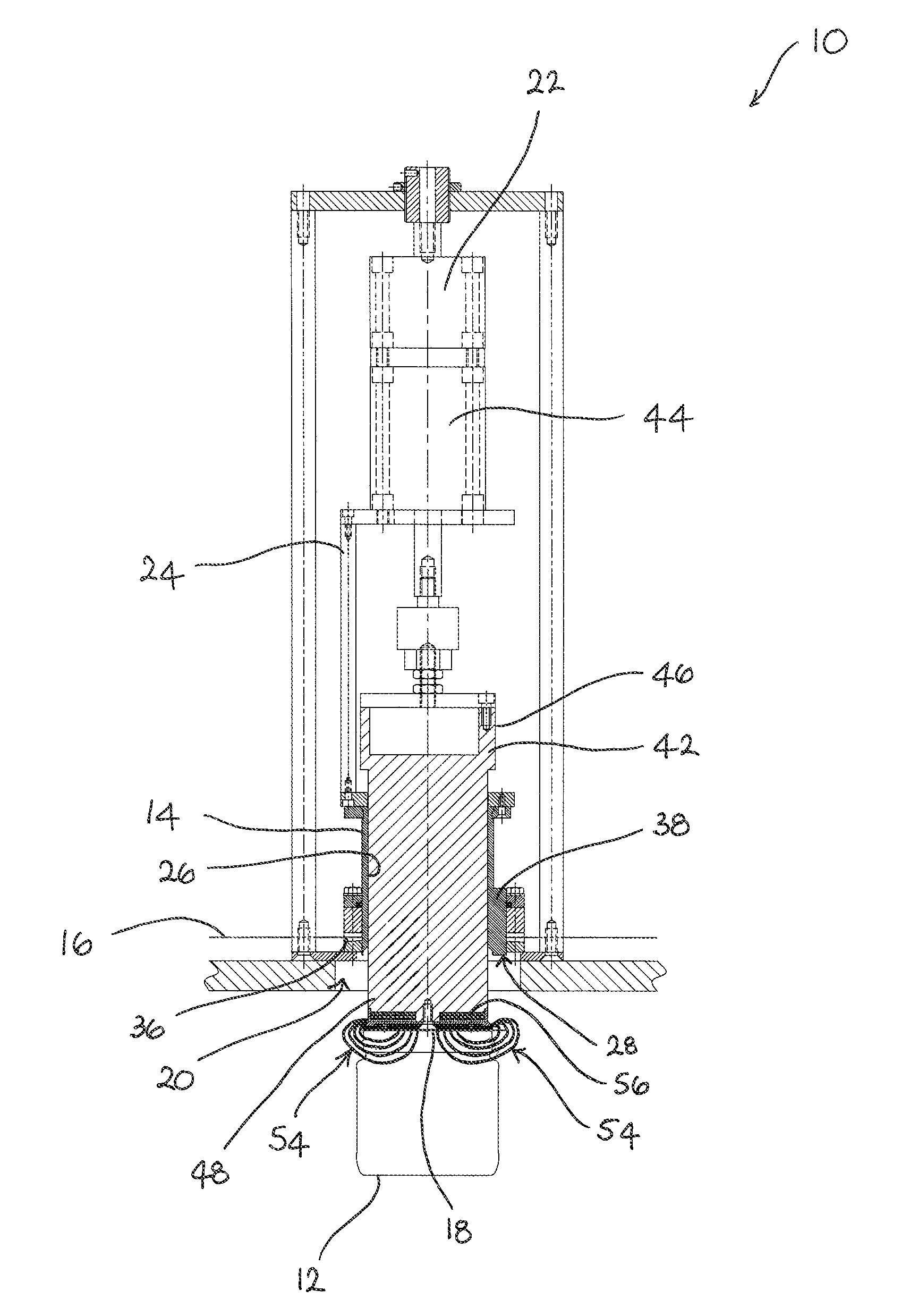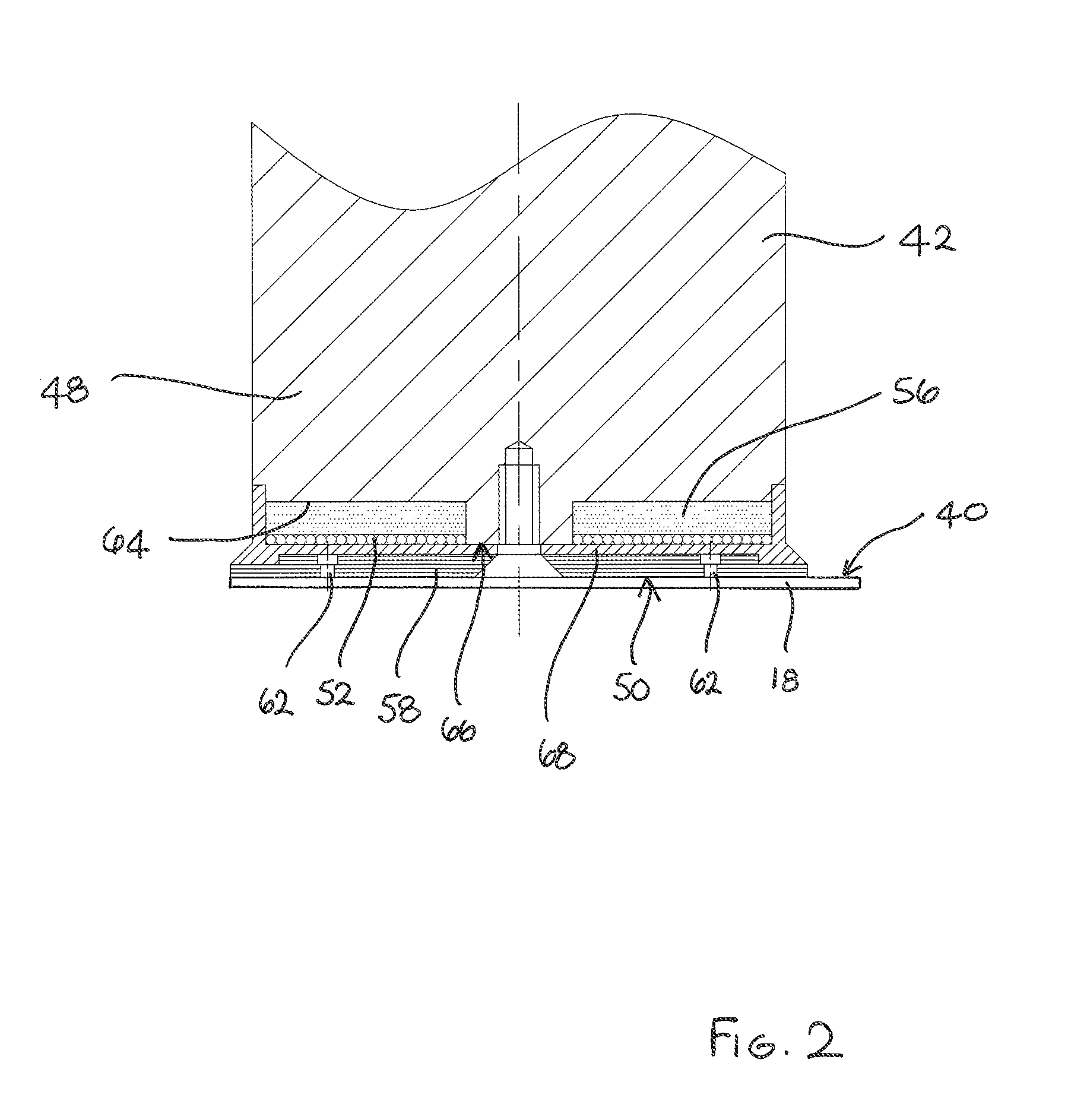Apparatus and method for sealing a container
a container and sealing technology, applied in the field of containers sealing apparatus, can solve the problems of container shattering, ceramic materials are not suitable for use, and the use of ceramic cutting tools can be problematic,
- Summary
- Abstract
- Description
- Claims
- Application Information
AI Technical Summary
Benefits of technology
Problems solved by technology
Method used
Image
Examples
Embodiment Construction
[0038]Embodiments of the present invention will now be described by way of example only and with reference to the accompanying drawings.
[0039]Referring to the drawings, there is shown a container sealing apparatus 10 for sealing an open top of a container 12 (see FIG. 5). The apparatus 10 can be used to seal containers 12 formed from a variety of materials, such as glass or plastics, having a variety of geometries and intended for a variety of end uses.
[0040]The apparatus 10 comprises a cutting member 14 which is linearly displaceable between a first position shown in FIG. 1 and a second position shown in FIG. 5. During movement from the first position to the second position, the cutting member 14 cuts a portion of sealing material from a web 16 of sealing material to provide a cut portion 18 of sealing material for sealing to the open top of the container 12. The web 16 of sealing material is typically provided on a supply reel (not shown) and extends through a cutting and sealing ...
PUM
| Property | Measurement | Unit |
|---|---|---|
| thickness | aaaaa | aaaaa |
| electrically conductive | aaaaa | aaaaa |
| electrically insulating | aaaaa | aaaaa |
Abstract
Description
Claims
Application Information
 Login to View More
Login to View More - R&D
- Intellectual Property
- Life Sciences
- Materials
- Tech Scout
- Unparalleled Data Quality
- Higher Quality Content
- 60% Fewer Hallucinations
Browse by: Latest US Patents, China's latest patents, Technical Efficacy Thesaurus, Application Domain, Technology Topic, Popular Technical Reports.
© 2025 PatSnap. All rights reserved.Legal|Privacy policy|Modern Slavery Act Transparency Statement|Sitemap|About US| Contact US: help@patsnap.com



